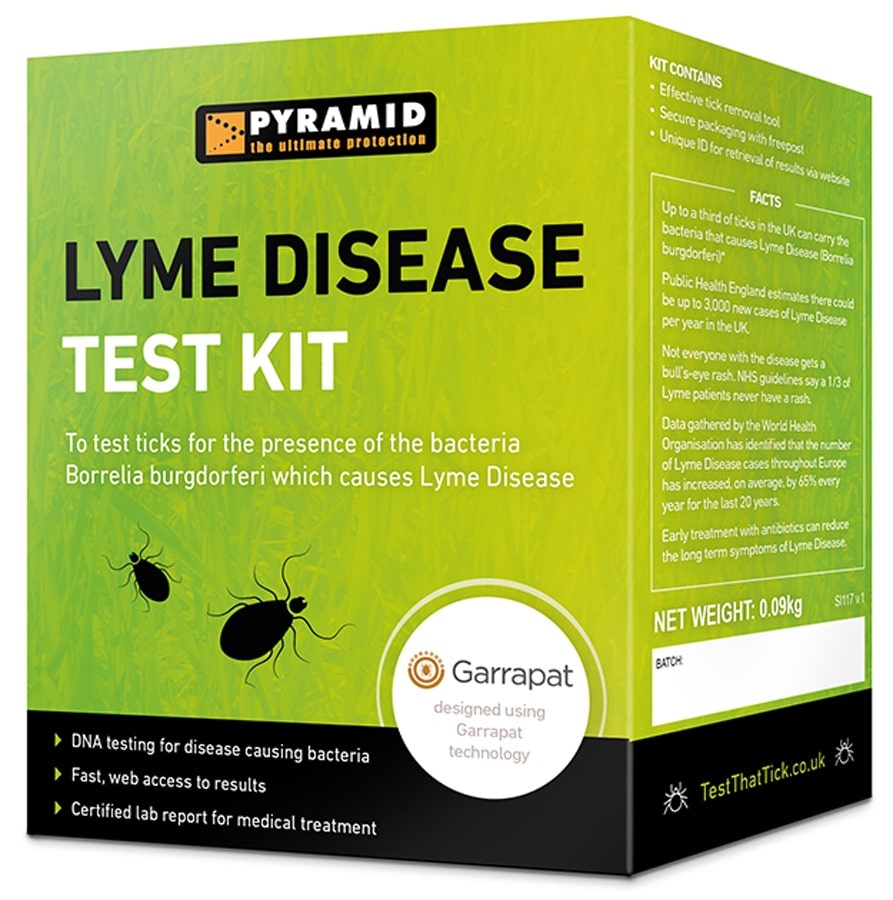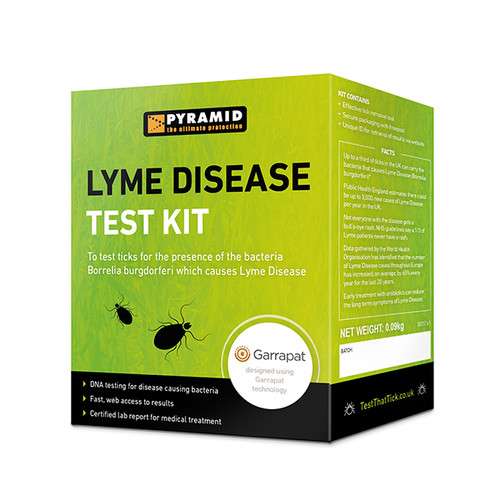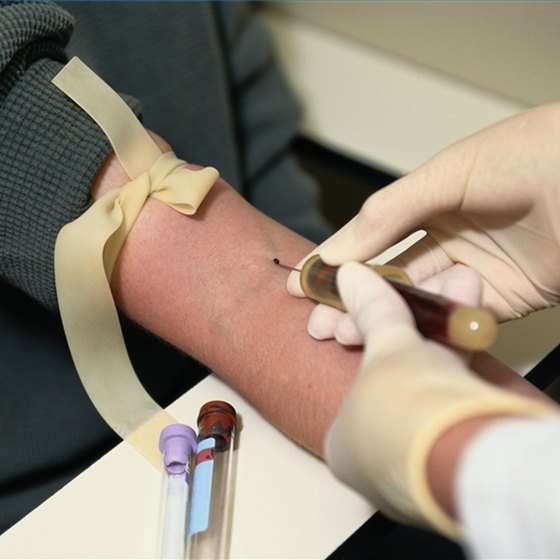Other Lyme Disease Tests
Three other tests that may be used to diagnose Lyme disease are polymerase chain reaction , antigen detection and culture testing. They are called direct tests because they detect the bacteria, not just your immune response to it.
PCR multiplies a key portion of DNA from the Lyme bacteria so that it can be detected. While PCR is highly accurate when the Lyme DNA is detected, it produces many false negatives. This is because the Lyme bacteria are sparse and may not be in the sample tested.
Antigen detection tests look for a unique Lyme protein in fluid . Sometimes people whose indirect tests are negative are positive on this test.
Culture is the gold standard test for identifying bacteria. The lab takes a sample of blood or other fluid from the patient and attempts to grow Lyme spirochetes in a special medium.
Although culture tests are generally accepted as proof of infection, the CDC has advised caution on the only commercially available culture test developed by Advanced Laboratory Services. LDo recognizes that the test is new and requires further validation in other studies. However, we believe that informed patients should be able to choose the test if they prefer. Choice is particularly important given the low quality of Lyme disease tests generally.
Lyme Disease Test Two
Two-tiered Lyme disease testing uses two tests. The first is a screening test that should detect anyone who might have the disease. Tests that do this well have are regarded as having high sensitivity. This test is followed by a second test that is intended to make sure that only people with the disease are diagnosed. Tests that do this well have high specificity.
HIV/AIDS is diagnosed with tests that are both highly sensitive and highly specific. They are accurate more than 99% of the time. In Lyme disease, the second test is highly specific. So there are few false positives. Unfortunately, the screening test is highly insensitive and fails to accurately identify patients who have Lyme disease. The two-tiered test system misses roughly 54% of patients.
Because of this, LDo recommends the patients and physicians skip the ELISA and go straight to the Western blot.
Can Lyme Disease Be Detected By A Blood Test
In a word: yes!
A blood test does not only detect Lyme disease it is the most accurate and preferred test for diagnosing the disease. If a patient with Lyme disease shows signs that the central nervous system has been affected by the disease, western blot testing on the cerebrospinal fluid can be performed. If ordering from Walk-In Lab, a doctors note is not needed. Just pick your Lyme disease test and place your order online.
Don’t Miss: Pain Medication For Lyme Disease
How Lyme Antibody Testing Works
Antibody testing for Lyme disease requires two different tests to establish a positive result. If either the first tier test or the second tier test is negative, the test result is negative overall.
But in the event of a negative result, Dr. Adriana Marques of the NIH states:
For patients with signs or symptoms consistent with Lyme disease for less than or equal to 30 days, the provider may treat the patient and follow up with testing of convalescent-phase serum.
The first tier of the two-tiered testing system is an Enzyme Immunoassay .
The second tier of the well-established Standard Two-Tiered Testing involves a Western Blot test, which can be complicated to understand. The Western Blot is also called an immunoblot or a line blot.
The Western Blot test typically reports two types of antibodies that may be indicative of a Lyme infection: IgM and IgG.
According to the CDC, Positive IgM results should be disregarded if the patient has been ill for more than 30 days.
According to a consensus of experts, including representatives of the American Academy of Pediatrics, American Academy of Neurology, American College of Rheumatology, and Infectious Diseases Society of America:
Immunoglobulin G seronegativity in an untreated patient with months to years of symptoms essentially rules out the diagnosis of Lyme disease, barring laboratory error or a rare humoral immunodeficiency state.
The Most Common Lyme Disease Blood Tests

The two most common diagnostic tests for Lyme disease are the enzyme-linked immunosorbent assay and the Western blot. These Lyme disease tests allow physicians to visualize the reaction between antibodies in an infected persons blood to specific antigens or parts of the bacteria that cause Lyme disease.
In the case of the Western blot, for example, antigens are separated by size and then transferred onto a membrane strip. When an antibody reacts with an antigen on the strip, that band will turn dark purple. For test results to be positive, a specific combination of bands on the membrane strip must be present.
Recommended Reading: What Helps With Lyme Disease
Is This Test Right For Me
This test may be right for you if:
- You spent time in an area where Lyme disease is prevalent
- You have been in outdoor areas where ticks live
- You are experiencing symptoms such as rash, fever, chills, headache, fatigue, muscle and joint aches, and swollen lymph nodes
If you are experiencing heart or neurologic symptoms, please seek immediate medical attention.
This test may not be right for you if:
- The tick bite occurred within the past 2 to 3 weeks
- You are not experiencing symptoms
Key Points To Remember
- Most Lyme disease tests are designed to detect antibodies made by the body in response to infection.
- Antibodies can take several weeks to develop, so patients may test negative if infected only recently.
- Antibodies normally persist in the blood for months or even years after the infection is gone therefore, the test cannot be used to determine cure.
- Infection with other diseases, including some tickborne diseases, or some viral, bacterial, or autoimmune diseases, can result in false positive test results.
- Some tests give results for two types of antibody, IgM and IgG. Positive IgM results should be disregarded if the patient has been ill for more than 30 days.
You May Like: How Long Can A Person Live With Lyme Disease
How To Get A Tick Tested
Ticks can be tested dead or alive . If you have removed a tick and want to have it tested, you have two options:
- Store it on a damp paper towel or cotton swab in a sealed plastic vial or ziploc bag.
- Securely attach the tick with tape to a piece of paper.
If the tick is already dead, there is no need to keep it moist. DO NOT store the tick in alcohol as it may compromise the test results.
You may choose to save the tick for testing should you begin to experience symptoms, rather than have it tested immediately.
DO note the date and location of the tick bite. If possible you should record:
- Location where tick attached
- Location on body where tick was removed
- Any other details about physical symptoms or location where tick was encountered
What I Want You To Know About Living With Late Stage Lyme Disease
Most of us have heard of Lyme Disease, but arent aware that living with Late Stage Lyme Disease can go far beyond treatment of a bulls-eye rash.
*Please be aware that the following post is provided for general informational and educational purposes only and it is not intended as, and shall not be understood or construed as, professional medical advice, diagnosis, or treatment, or substitute for professional medical advice, diagnosis, or treatment. Before taking any actions based upon such information, I expressly recommend that you seek advice from a medical professional.*
Dont Miss: Tick And Lyme Disease Facts
Recommended Reading: Lyme Disease Brain Fog Treatment
Late Lyme Disease Symptoms
Getting An Initial Screening
You May Like: Cure Lyme Disease Without Antibiotics
You May Like: How Do You Test A Tick For Lyme Disease
Management Of Individuals Without Symptoms Following A Tick Bite
Diagnostic testing is not recommended for individuals who do not develop any symptoms suggestive of Lyme disease after a tick bite.
Some commercial companies offer services to test removed ticks for the presence of the bacteria that cause Lyme disease. UKHSA does not provide such tick-testing services. The results of such tests should not be used to inform diagnosis or treatment. A positive result does not mean that the infected tick will have passed on the bacteria there are many factors that determine whether Lyme disease results from the bite of an infected tick. A negative result may not be technically valid and could give false assurance, as it does not exclude the possibility that another tick elsewhere on the body has been missed by the patient.
UKHSA runs a tick surveillance scheme and is happy to receive ticks for species identification and to monitor tick distribution.
Should You Get Tested For Lyme Disease

The current laboratory diagnostic tests for Lyme disease are blood tests to detect the antibodies created by your body to fight and kill the bacteria that causes Lyme. This bacteria is called Borrelia burgdorferi, or Bb.
However, with early-stage Lyme your antibodies may not have had time to develop in your body. Therefore a blood test at this time will often appear negative. It can take your body up to two months to develop enough antibodies to be detected by these tests. In other words you could have Lyme but the test results will still come up negative.
What does this mean for you? By all means, if your doctor recommends a test, get the test. But dont rely on it completely. Trust your body and trust your homework. Monitor your symptoms. Ask questions.
Recommended Reading: Old Lyme Bed And Breakfast
You May Like: What Are Symptom Of Lyme Disease
What Is Late Stage Lyme Disease
The CDC reports that late stage Lyme disease may appear days to months after the initial tick bite and may include but are not limited to: Severe headaches and neck stiffness. Additional EM rashes in new places on the body. Facial palsy, also known as Bells palsy paralysis of one side of the face.
Can Your Body Clear Lyme Disease On Its Own
It is possible a person with Lyme disease can clear the infection on their own, but its better to be treated because complications that can arise are very serious. For most people, the disease and its symptoms do not resolve without treatment. According to the CDC, there is no vaccination for Lyme disease.
Also Check: Most Effective Lyme Disease Treatment
Where Are Ticks Found
Ticks are found throughout the UK and in other parts of Europe and North America. There are a high number of ticks in the Scottish Highlands.
They can be found in any areas with deep or overgrown plants where they have access to animals to feed on.
Theyâre common in woodland and moorland areas, but can also be found in gardens or parks.
How To Test For Lyme Disease
This article was medically reviewed by Sarah Gehrke, RN, MS. Sarah Gehrke is a Registered Nurse and Licensed Massage Therapist in Texas. Sarah has over 10 years of experience teaching and practicing phlebotomy and intravenous therapy using physical, psychological, and emotional support. She received her Massage Therapist License from the Amarillo Massage Therapy Institute in 2008 and a M.S. in Nursing from the University of Phoenix in 2013.There are 7 references cited in this article, which can be found at the bottom of the page. This article has been viewed 11,511 times.
Lyme disease, caused by spirochetal bacteria, is found in wild animals, particularly deer and rodents. Ticks carry the disease between these animals, as well as to humans. To test for this disease, use a two-step process that consists of the ELISA test and the Western blot test. Before these tests are performed, a doctor will use your likely exposure to the disease and your presentation of symptoms to determine if they should do these tests.
Read Also: What Kind Of Antibiotics For Lyme Disease
Does Lyme Disease Go Away
Although most cases of Lyme disease can be cured with a 2- to 4-week course of oral antibiotics, patients can sometimes have symptoms of pain, fatigue, or difficulty thinking that last for more than 6 months after they finish treatment. This condition is called Post-Treatment Lyme Disease Syndrome .
How Do I Know If I Have Lyme Disease
In order to tell if you have Lyme disease, you may need to get a Lyme disease blood test. However, many cases are diagnosed through a combination of your personal history, exposure to tick bites, physical examination, and symptoms.
According to MedlinePlus, Lyme diagnostic tests identify the presence of antibodies that your body produces in response to the disease. However, it can take a few weeks for these antibodies to show up in your blood. If you get tested before this happens, a test for Lyme disease can come back negative even if you do have the condition.
However, testing can be very useful if the clinical diagnosis for your condition is unclear. According to the Mayo Clinic, there are different types of tests used to diagnose Lyme disease, including:
- Enzyme-linked immunosorbent assay test
- Western blot test
According to the CDC, its currently recommended to get both of these Borrelia burgdorferi tests done to confirm a Lyme diagnosis. The ELISA test should be done first if the result is positive, a Western blot test is done to confirm the diagnosis. If the ELISA result is negative, no further testing is needed.
Its also recommended that all children aged 3 months to 18 years are screened for Lyme disease if they live in or have traveled to an area with a high risk for Lyme disease transmission.
Also Check: When Is It Too Late To Treat Lyme Disease
Is There Anything Else I Need To Know About Lyme Disease Tests
At-home test kits for Lyme disease are available. To do these tests, you usually collect a drop of blood from your finger and send it to a lab for testing. If you want to do an at-home test, it’s important to talk with your provider first. Some at-home tests may use lab methods that aren’t proven to work, so your results may not be accurate.
Additional Novel Diagnostic Approaches

Another approach to improve sensitivity for detection of early Lyme disease involves identifying diagnostic proteins and metabolites in serum of patients with Lyme disease. These methods, referred to as proteomics and metabolomics, respectively, are particularly appealing because they also have the potential to identify biomarkers indicative of cure . Researchers have also reported promising results using immuno-PCR, which combines the sensitivity of PCR with EIA-based antibody detection .
Read Also: Can Lyme Disease Cause Psoriasis
Lyme Disease Treatment Options
Early detection and treatment of Lyme are crucial. Most Lyme disease infections clear up with the help of a course of antibiotics you can take at home.
In some cases, however, people who are treated with antibiotics may continue to experience symptoms. When this happens, its called chronic Lyme disease or post-treatment Lyme disease syndrome. Doctors may treat chronic Lyme disease with a continued course of antibiotics, but the treatment often also involves managing symptoms like pain and inflammation.
If youre experiencing symptoms of Lyme disease and think you may have been bitten by a tick and were in an area where it is common, seek medical care as soon as possible. If certain symptoms and risk factors are present, doctors will typically treat for Lyme disease without waiting for a test result.